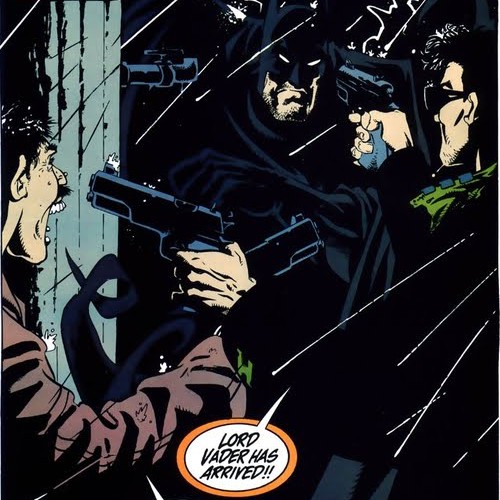One fine day, when browsing through the old books in one of the bookstores near Anuradha Theatre, Guwahati, I came across the novelisation of The Thief of Baghdad, the movie starring Errol Flynn and released sometime before the fifties. The only Thief of Baghdad I knew then was the Shatrughan Sinha version, but I still bought the book. It was by some guy named Richard Wormser, and what sold me was not just the price (8 rupees, for the record), but the way it began.
“My name is Abu Hastin, and I am a djinn, or as some people prefer, a genie, or a jinn, or rather impolitely, a demon. Me, I prefer to called a genius.”
The story concerned itself with guardian djinns of cities who competed with each other in various aspects, and our friend Abu Hastin was a peeved djinn because the sultan of Baghdad, his city was an old nincompoop. The old king was interested more in fireworks and circus acts than statesmanship, and he was planning to marry off his beautiful daughter to the Crown Prince of Mossul, which effectively meant that Abu Hastin was to eat humble pie for at least fifty years, because he was not pally with the djinni of Mossul.
So he decides to take matters into his own hands. Which involves making sure that the princess meets and falls in love with the Thief of Baghdad.
It was a fantastic story, full of wit and adventure and snarky comments, and I remember reading and rereading it quite a number of times. It’s still at Guwahati though, and I think it’s out-of-print, at least because the name Richard Wormser does not ring a bell with anyone.
Now when vrikodhara showed me The Amulet of Samarkand in Bombay, I was kind of pissed at Jonathan Stroud. I was pretty sure that he had read the Thief of Baghdad when he was a kid, and decided to use the first-person-smart-talking-djinn to create a post-Potter young adult fantasy trilogy. Similar feelings persisted when I saw Artemis Fowl for the first time, but the premise of Fowl was a little more contemporary than Samarkand.
But boy, three books and one trilogy later, I have to admit that I was wrong about Jonathan Stroud. The Bartimaeus Trilogy rocks. Not because it’s fantasy and it has a smart-ass djinn in it, but because Stroud’s mixture of magic, politics and ancient history surpasses your average Young adult novel by miles. Refreshing characterisation – Nathaniel, the young protagonist does not have any claptrap like ancient prophecies hanging over his fate, frankly speaking, we do not know whether to like him or hate him because he changes over the three books, his life completely taken over by the politics of the reigning magicians of the day. in Ptolemy’s Gate, he has become John Mandrake, Information Minister, feared by commoners (i.e the non-magic wielding populace of the nation), privy to the Council of politician-magicians closest to Rupert Devereaux, the Prime Minister. Devereaux is himself a skilled magician, and over the course of time has become a perfect despot, choosing to ignore the grievances of his people, indulging in his love for theatre more than ever, and most importantly, forbidding the use the Staff of Gladstone and the Amulet of Samarkand to quell the enemies of the Empire. It is a time of much turmoil in England, as more and more commoners have become resilient to magic, and secret rebel organisations have cropped up against the ruling elite.
Bartimeus the djinn is still working for Mandrake, but even as the book begins, we discover that Mandrake has kept Bartimaeus away from The Other Place ( where all djinns and afrits and marids hail from) for so long that the poor guy has weakened, and needless to say, he is disgruntled. Even more so when Mandrake sends him on a solo mission to track a certain fugitive who had escaped their clutches several years ago (from the previous book, The Golem’s Eye). But then, a djinn’s got to do what a djinn’s got to do…The general complaint about The Golem’s Eye was that there was too much politics, and too less Bartimaeus, and this is not a complaint anyone should have with this book, at least. The footnotes leave you in splits, everytime.
Kitty Jones, the fugitive rebel from Book 2 is the third protagonist of Ptolemy’s Gate, and she has been making plans of her own all these years. Some of them involve Bartimaeus and his former master Ptolemy. Stroud interweaves his story with brief vignettes from Ptolemy’s life, and by Part 3 of the book, which comes somewhere in the middle, the build-up is complete. Part 4 ends with a shocker that I had been expecting, and the rest of the book deals with revenge ( you would be surprised at how many people..erm…individuals are looking to get their dishes served cold in this book, and how many of them do get their comeuppance), redemption, and yeah, closure. What an ending! Seriously, I doubt if anyone would expect the trilogy to end this way. I sincerely hope Jonathan Stroud does not get carried away by marketting possibilities and come up with spin-off series involving the characters or something.
If you haven’t read any of the Bartimaeus trilogy yet, I strongly suggest you do so immediately. This one’s a white-heat read for sure.
